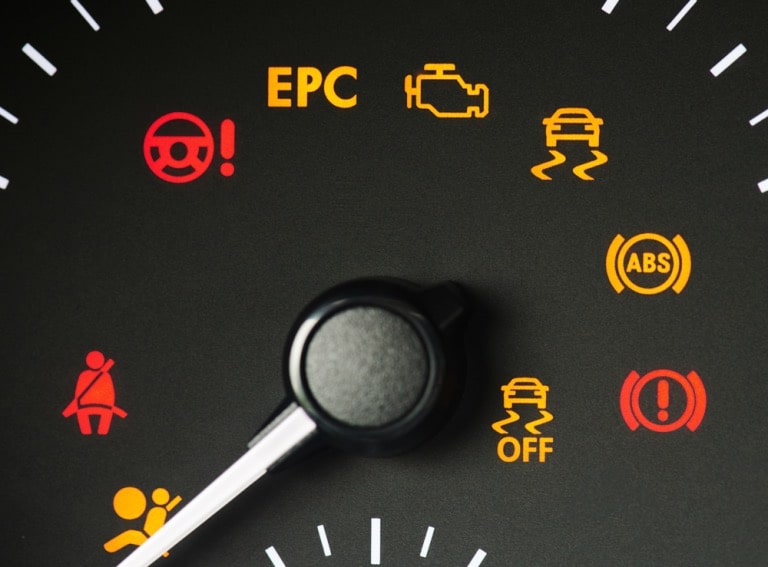Understanding Your Vehicle’s Alert Indicators: What They Mean?

Driving can be one of life’s little pleasures, but nothing shatters this tranquility quite like an unexpected alert on your car’s dashboard. Whether you’re a new driver or a seasoned road warrior, understanding what these indicators mean can save you time, money, and stress. This guide will help you decode your vehicle’s alert indicators, ensuring your journeys are as smooth and safe as possible.
Why Knowing Your Alert Indicators Matters?
Imagine cruising down the highway, enjoying your favorite playlist, when a mysterious light suddenly illuminates your dashboard. Panic sets in—is it serious? Should you pull over immediately? Understanding dashboard warning lights is crucial for every driver, as they serve as the first line of communication between your vehicle and yourself.
Each light carries a specific meaning, from the benign tire pressure warning to more serious alerts like engine malfunctions. By paying close attention to these indicators, you can address potential issues before they escalate, ensuring not only your vehicle’s longevity but also your safety on the road. Moreover, being informed about these dashboard warning lights reduces reliance on costly mechanic visits for minor problems, allowing you to make informed decisions regarding your car’s maintenance.
Common Alert Indicators You Might Encounter
The Check Engine Light
The check engine light is probably the most infamous of all alert indicators. It can signify various issues, from a loose gas cap to a more serious engine problem. This light is usually yellow or orange, and its appearance should prompt you to get your engine checked as soon as possible.
Oil Pressure Warning
When the oil pressure warning light flashes, it’s signaling that your engine’s oil pressure is too low. This could be due to a leak, oil pump failure, or simply because your car is low on oil. Ignoring this light can lead to severe engine damage.
Brake System Alert
A brake system alert indicates a problem with your braking system. This could range from low brake fluid to worn-out brake pads. Given the importance of brakes for your safety, any brake system alert should be addressed immediately.
Tire Pressure Monitor
The tire pressure monitor light looks like a horseshoe with an exclamation point in the middle. It alerts you when one or more of your tires are under-inflated. Driving with low tire pressure can affect your car’s handling and fuel efficiency, and may even lead to a blowout.
Understanding the Meaning Behind Each Indicator
The Check Engine Light
When your check engine light comes on, it’s easy to panic. However, it doesn’t always mean a catastrophic failure. Here are some potential causes:
- Loose Gas Cap: Believe it or not, a loose or damaged gas cap can trigger this light. Make sure it’s tightly secured.
- Oxygen Sensor Issues: A faulty oxygen sensor can affect your engine’s performance and fuel efficiency.
- Catalytic Converter Problems: This is more serious and usually requires professional attention.
Oil Pressure Warning
Low oil pressure is a serious concern, as it can quickly lead to engine damage. Potential causes include:
- Oil Leak: Check for oil puddles under your car.
- Faulty Oil Pump: This component is vital for circulating oil through your engine.
- Low Oil Level: Sometimes, simply adding more oil can resolve the issue.
Brake System Alert
Your brake system is critical for safe driving. Here’s what might be wrong:
- Low Brake Fluid: This could be due to a leak or simply because it’s time for a refill.
- Worn Brake Pads: Over time, brake pads wear down and need replacing.
- ABS Issues: Problems with the Anti-lock Braking System (ABS) can also trigger this alert.
Tire Pressure Monitor
Proper tire pressure is essential for safe and efficient driving. Causes for this alert include:
- Under-Inflated Tires: Check and inflate your tires to the recommended pressure.
- Temperature Changes: Cold weather can cause tire pressure to drop.
- Tire Damage: Punctures or other damage can cause air leaks.
Preventive and Maintenance Tips
Regularly Check Fluid Levels
One of the easiest ways to prevent alert indicators from popping up is by regularly checking your car’s fluid levels. This includes engine oil, brake fluid, coolant, and transmission fluid. Keeping these at optimal levels can prevent many common issues.
Keep Your Tires in Check
Tires are often overlooked but play a crucial role in your car’s performance and safety. Make it a habit to check your tire pressure monthly and before long trips. Don’t forget to inspect the tread for wear and tear.
Schedule Routine Maintenance
Routine maintenance is the backbone of a healthy vehicle. Follow your manufacturer’s recommended service schedule, which typically includes oil changes, filter replacements, and system checks. Regular maintenance not only keeps your car running smoothly but also identifies potential issues before they become major problems.
How Technology is Changing Vehicle Alert Indicators?
Advanced Diagnosis Tools
Modern cars are equipped with advanced onboard diagnostics (OBD) systems. These systems can read error codes and provide detailed information about what’s wrong. Some cars even offer app integration, allowing you to monitor your vehicle’s health from your smartphone.
Real-Time Alerts
Gone are the days when you had to guess what a cryptic symbol meant. Today’s vehicles can provide real-time alerts and detailed explanations right on the dashboard or through connected apps.
Enhanced Safety Features
Modern technology has introduced features like adaptive cruise control, lane departure warnings, and automatic emergency braking. These systems often come with their own set of indicators, helping you stay safe on the road.
Understanding your vehicle’s alert indicators is not just about avoiding inconvenience; it’s about ensuring your safety and extending the life of your car. By familiarizing yourself with these indicators, you can take prompt action and avoid costly repairs.
Remember, staying informed and proactive about vehicle maintenance is the key to a smooth and safe driving experience. If you’re unsure about any indicator, don’t hesitate to consult your owner’s manual or seek professional help.





